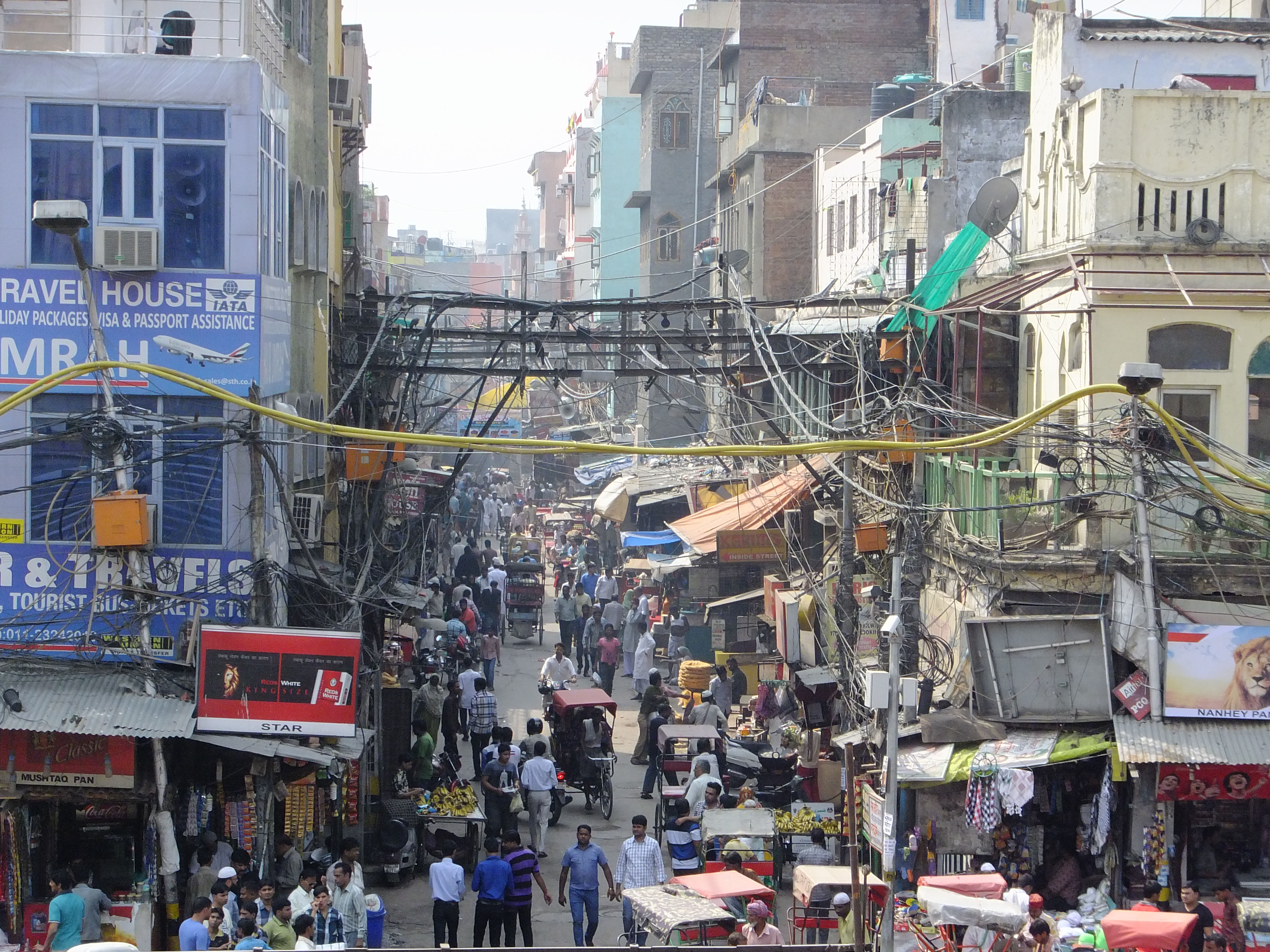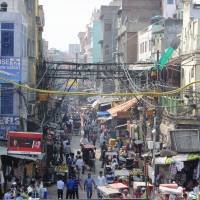Careening through the winding streets of Chennai, India, in the back of black and yellow auto-rickshaws, I am always amazed by the drivers' audacity — or perhaps a better term would be "death wish." These are the subcontinent's equivalent of New York's exuberant cabbies, but these drivers are much more likely to be found traveling the wrong direction on one-way streets.
I'm nearly a veteran of these stubby, oblong vehicles, having been in India each summer for the past eight years with university students visiting NGOs, rural development projects and Japanese working in the public and private sectors. Nevertheless, I still feel a mixture of excitement and foreboding every time I climb into one of these sputtering, soft-top tricycles that zigzag through traffic with their two-stroke engines spewing oily smoke.
Today India is home to about 1.27 billion people, approximately 18 percent of the world's population, second only to China. With India's growth rate hovering around 1.6 percent, the UN's 2012 World Population Prospects report predicts that it will outpace China by 2028. By then, India and China will each have around 1.45 billion citizens.
Down the road, it is expected that the human race could total as many as 9.6 billion by 2050, with most of us living in cities.
If that day comes, how will city dwellers get around? It wouldn't surprise me if by then most cities have banned private cars in an effort to mitigate climate change and keep streets passable for public transport and emergency vehicles.
At the moment, though, the vast majority of Indians and Chinese do not have cars. However, most want them, and car companies are keen to oblige, as are governments. Sales of new cars boost a nation's economy, as do road-building, gasoline sales and the costs of vehicle ownership, including registration, insurance and maintenance.
The problem for India and cities throughout the world is this: If everyone who wants to drive does, where on Earth will we put all the cars?
We can build new roads and highways, new bypasses and parking garages, but research shows that each time new roads are constructed to reduce traffic congestion, more drivers choose to drive, creating renewed congestion. More drivers demand more roads, and more roads generate more demand, creating a roundabout without an exit.
In response, many cities in the developed world have begun to seek alternatives, including inner-city driving charges, express lanes for high-occupancy vehicles, car-pooling programs, more light-rail transport and designated bicycle lanes.
But despite the options now available, India seems destined to repeat the ill-fated transportation policies of the developed world.
India is already the fifth-largest automobile manufacturer in the world, according to an article posted on www.indiatransportportal.com in November 2012. "National highways that run across the length and breadth of the country measure 70,934 km and have become the lifeline of India. With the commitment of the government of India to build roads to reach both the urban and rural populations alike, the future of transport can only be predicted to become phenomenal," states the website.
Phenomenal indeed, with cities already facing gridlock and more cars on the way. According to the same author, Delhi alone adds more than 900 cars to its roads each day.
Unfortunately, despite tight municipal budgets and little space available for new infrastructure, car advocates such as the author of this transport article see more roads as the answer.
"As the number of cars on Indian roads increases, there is a definitive need to cater to demands for a smooth and hassle-free drive. The key to accommodating millions of cars in India lies in planning and implementing policies such as wider roads, ample parking spaces and low-pollution cars. It is therefore required to maintain the correct balance between the demand of cars and development of the required infrastructure."
However, according to one urban-transport planner, N. Ranganathan, India has already tipped beyond the balancing point.
"A recent estimate says the total number of vehicles in India will be 400-450 million in the next 20 years or so. Now we have nearly 60-70 million. Most of these vehicles will come to the cities," Ranganathan told Dipak Kumar Dash in a 2011 interview for the Times of India news service.
"There will be efforts to face the situation though these will not be enough. For example, Delhi got the Metro. All cities are getting flyovers and new roads are also being built. However, the quality of service will fall, speed will reduce and total travel time will be more. Besides, there'll be greater risk of accidents. While the demand (for roads) is already accelerating, supply is crawling," warns Ranganathan.
He urges more resources be spent on developing public transportation and believes that the bus system should be a priority.
"In cities like Delhi, Mumbai and Bengaluru (Bangalore), we need to have dedicated elevated corridors for buses and public transport so that they don't halt at traffic junctions. This will reduce private vehicles on roads and will encourage people to shift to public transport. The Metro service is another major solution, but we must understand that this is an expensive proposition," he explains.
Ranganathan also believes that auto-rickshaws have a key role to play in easing India's traffic congestion. I agree.
"Auto-rickshaw is the best alternative to private transport if authorities manage them properly. You don't need to create parking space for them and they work like private vehicles, from your home to workplace or any other destination," he explains.
Auto-rickshaws can fill an important niche, but before that happens the business will need a substantial face-lift. The vehicles will need cleaner engines, preferably electric, and must be more closely maintained and regulated for safety. Drivers, too, need to be paid a fair wage and given job security so that passengers need not haggle over fares each time they climb aboard.
Another approach to lessening congestion in India is to promote bicycles.
"Bicycles can compete with the faster means of transportation that are expensive, guzzle energy and cause pollution and traffic jams. Bicycles are inexpensive, good for the environment and least likely to cause jams," notes Neeraj Kaushal in a July 2011 article on the www.economictimes.indiatimes.com website.
In this regard, some nations are setting a better example than others.
"The U.S. has one of the lowest bicycle use rates in the world, about 1 percent of all commuting," while the Netherlands and Denmark, respectively, top the list with 30 and 20 percent of all commuting done by bicycle, according to Kaushal.
Unfortunately, India is headed in the opposite direction.
"Bicycle use in major Indian cities has steadily declined over the years. In 1960, bicycles accounted for 60 percent of all commuting trips in Delhi. In recent years, their share has fallen to 4 percent," writes Kaushal.
He cites two reasons for this decline. One is that bicycles have long been seen as "poor man's transport," and, second, cycling does not suit the way Indian women dress, which includes loose fabric saris and long shawls that are worn across the shoulders.
Interestingly, the author notes that wider use of bicycles might even help liberate Indian women, quoting America's famous 19th-century civil-rights leader Susan B. Anthony, who said, "Bicycles have done more to emancipate women than anything else in the world."
But recognizing the chaotic nature of Indian traffic where "might makes right," government officials will need to create safe, designated lanes for bicycles before riders embrace cycling in greater numbers.
With scooters now becoming more popular, India might also consider having one lane reserved for bicycles and another for scooters and auto-rickshaws, leaving one or two lanes for car traffic. Auto drivers seeing cyclists and auto-rickshaws sailing past might think twice before climbing into their cars for inner-city travel.
Of course, the situation is not quite that simple. India's auto-rickshaw drivers face numerous challenges that push people toward cars, including typhoon rains and flooding, extremely hot temperatures and high humidity, and-air quality problems from vehicle exhaust and dust.
Still, there is some hope for improving the role of auto-rickshaws in India's transportation mix.
In a piece for Grist Media in August, Simon Hardy took a look at the poor reputation of auto-rickshaw drivers and found a win-win situation in Ahmedabad. There, a public charitable trust called the Nirmal Foundation set up a firm called G-Auto in 2009.
"G-Auto runs a 10,000-strong fleet, a telephone booking facility, driver training programs and uses numerous customer feedback mechanisms to ensure high service standards. It also offers drivers health insurance and an allowance for their children's education. The service has eradicated overcharging and refusals-to-engage for passengers and at the same time increased the drivers' incomes," explained Hardy.
One success story won't change the nation, but it can help. More importantly, India's rising middle class, its government officials and its bureaucrats need to look abroad and see how alternatives to cars are gaining traction.
In a nation already jammed up by 70 million cars, adding 380 million more within 20 years will only prove to be a phenomenal mistake. A mistake that need not be made.
Stephen Hesse is a professor in the Law Faculty of Chuo University and associate director of Chuo's International Center. He can be reached at [email protected].


















With your current subscription plan you can comment on stories. However, before writing your first comment, please create a display name in the Profile section of your subscriber account page.